| Two weeks ago our newsletter featured the oldest artefact held by the Mills Archive, the rotary quern from the iron age. This week’s gem is the largest item in our collections: a threshing sledge from Alan Stoyel’s collection. |

The history of the threshing sledge
| Threshing is the stage in the processing of grain which follows reaping. After the wheat has been cut, the grain must be separated from the straw. This is then followed by winnowing, separating the grain and chaff. While today a combine harvester carries out all these functions, in the pre-industrial age they each had to be carried out separately by hand. There were a variety of means of threshing, such as trampling with horses or beating with flails. One of these methods involved the threshing board or threshing sledge. |
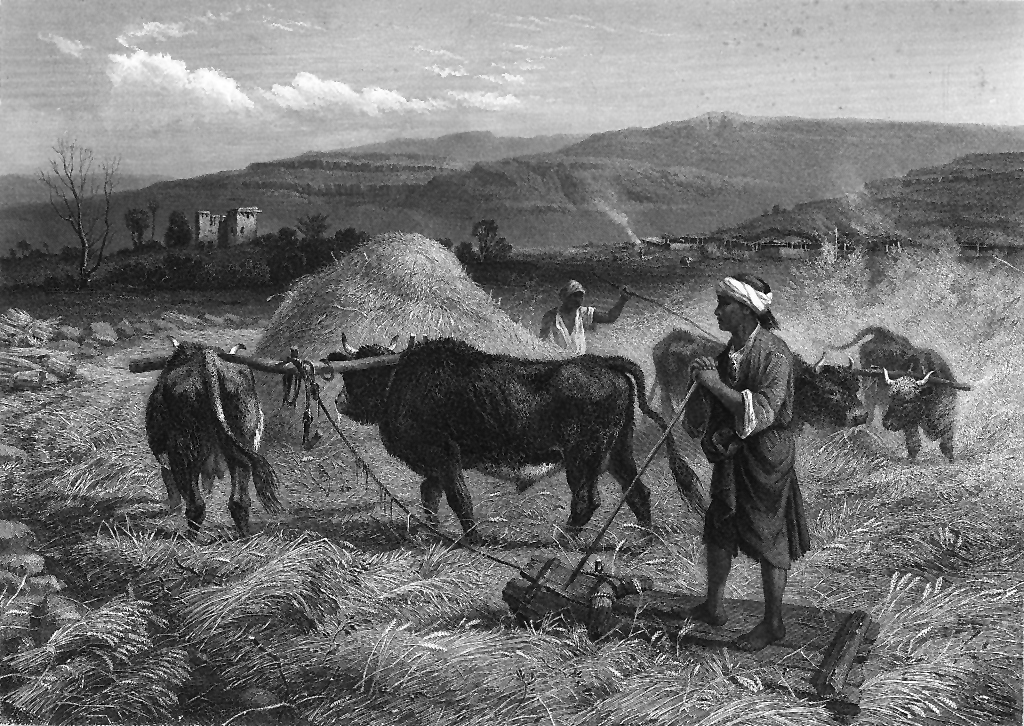
| Evidence has been found of threshing boards in use up to 8000 years ago and they have been found depicted on ancient cuneiform tablets from Mesopotamia. The threshing sledge is mentioned in the book of Isaiah in the Bible: Behold, I make of you a threshing sledge, new, sharp, and having teeth; you shall thresh the mountains and crush them (Isaiah 41:15). The Roman author Marcus Terentius Varro (116-27 BC) gives a description of the threshing sledge in his work on agriculture: The grain is threshed from the spikes on the threshing floor, an operation which some perform by means of a sledge drawn by a yoke of oxen: this sledge consisting of a wooden platform, studded underneath with flints or iron spikes, on which either the driver rides or some heavy weight is imposed in order, as it is drawn around, to separate the grain from the chaff (Rerum rusticarum libri III, Liber primus LII). Threshing boards were used in the Islamic world, including the Iberian Peninsula, where they continued in use after the Christian ‘reconquista’. They were still being used in Spain into the 20th century. |
Alan Stoyel’s trip to Spain
| In the summer of 1977 Alan Stoyel visited Spain. From the slides in his collection we can see that he observed and photographed the use of threshing sledges in numerous farms in the municipality of Ciudad Real. As these images show, these were in some cases pulled by horses with a man standing or sitting on the sledge. In other cases the sledges have heavy stones placed on them and are being pulled by a horse and cart, or a tractor. |
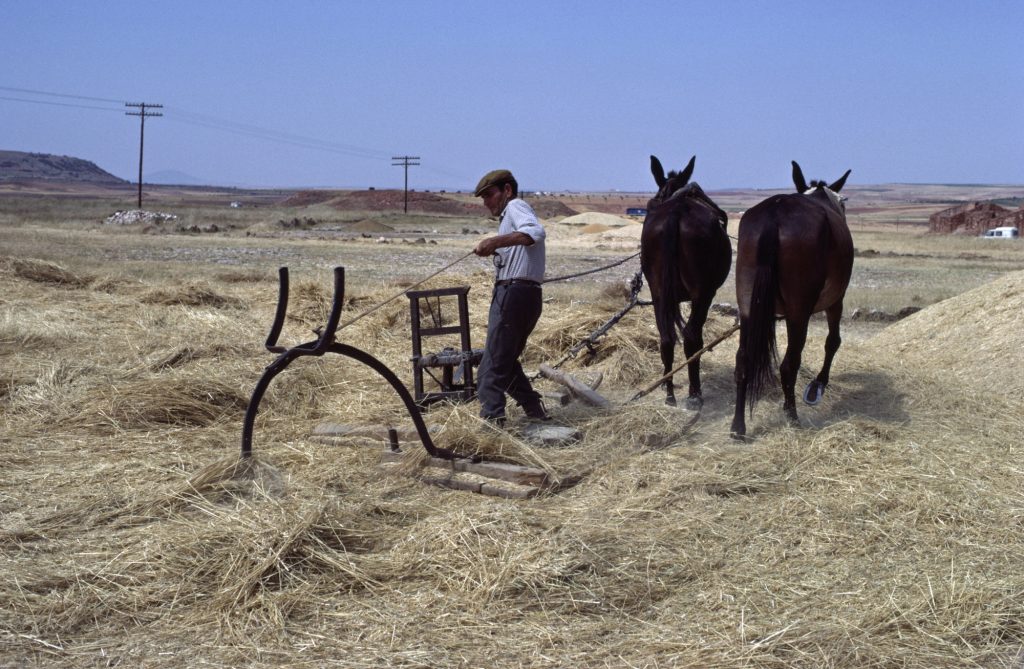
Alan Stoyel Collection
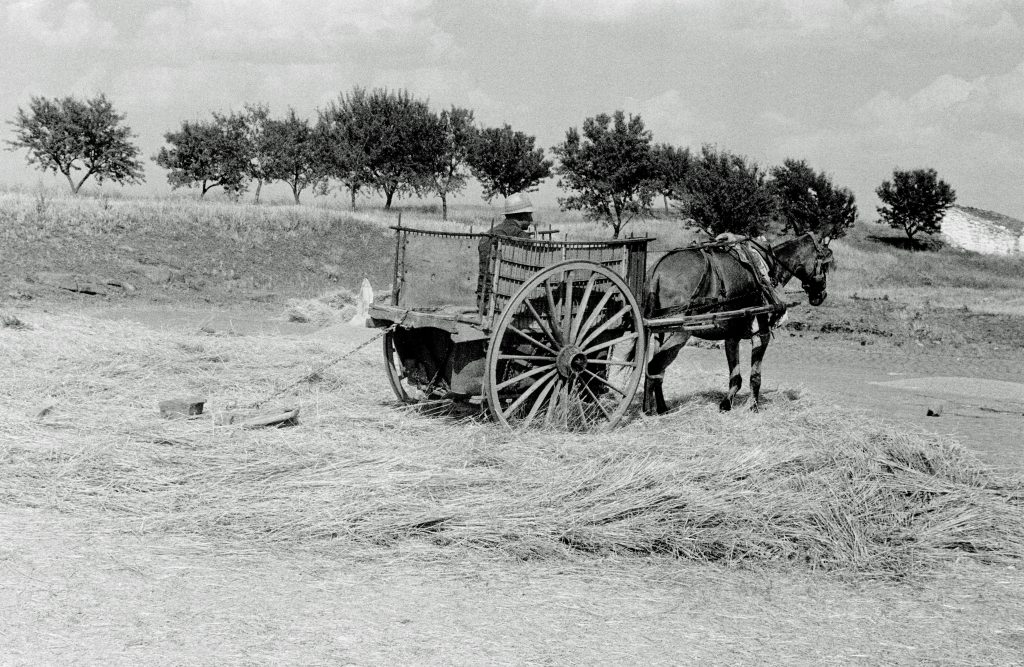

Alan Stoyel Collection
| Whether this was still the standard method of threshing at the time, or a demonstration put on at Alan’s request we can’t tell. However, it seems clear that it was at one of these farms that Alan acquired an old threshing sledge which he brought back to England. As the photo below shows, the threshing sledge along with a yoke and part of an old waterwheel were all strapped onto the roof of his tiny Renault 6 for the journey home! |

Alan Stoyel Collection
The construction of the sledge
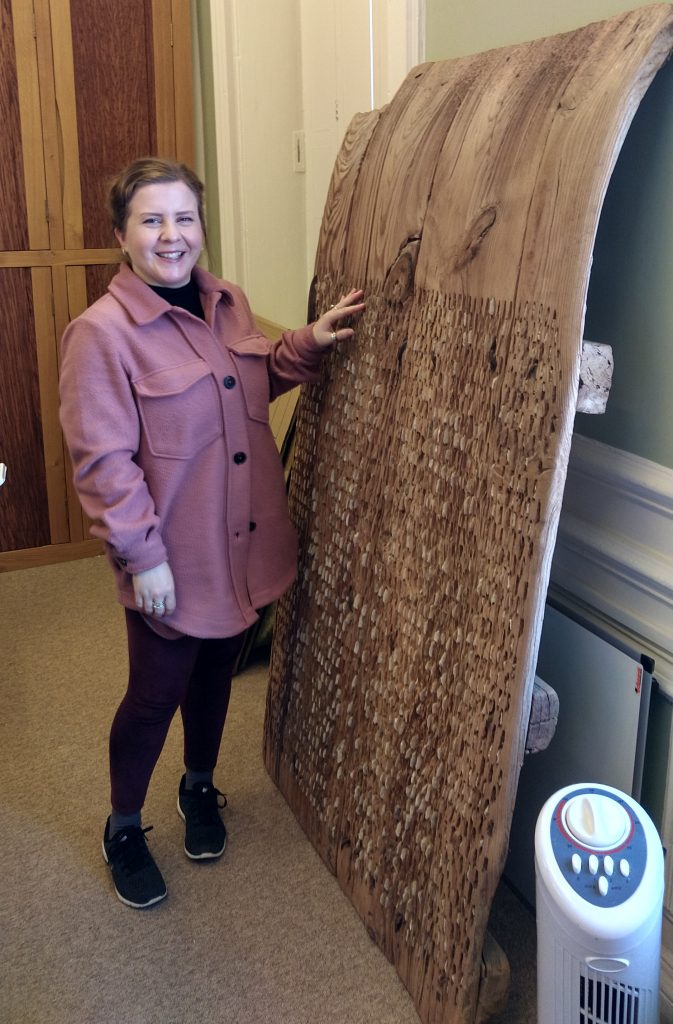
The sledge is made from wooden boards, curved at the end and joined on the upper side by wooden crosspieces. The first of these has the hook for attaching the rope to the horses.
On the underside of the sledge is an array of slots each holding a sharp piece of flint. The ‘briqueros’ – manufacturers of threshing boards and ploughs – would knap the flint in a manner similar to the manufacture of prehistoric flint tools, while woman known as ‘enchifleras’ would pound the flints into the board – as many as a thousand.

| Looking closely at the sledge it is possible to see many places where the flints have fallen out, and also many places where small amounts of straw have become wedged into the gaps around the edges of the flints. |
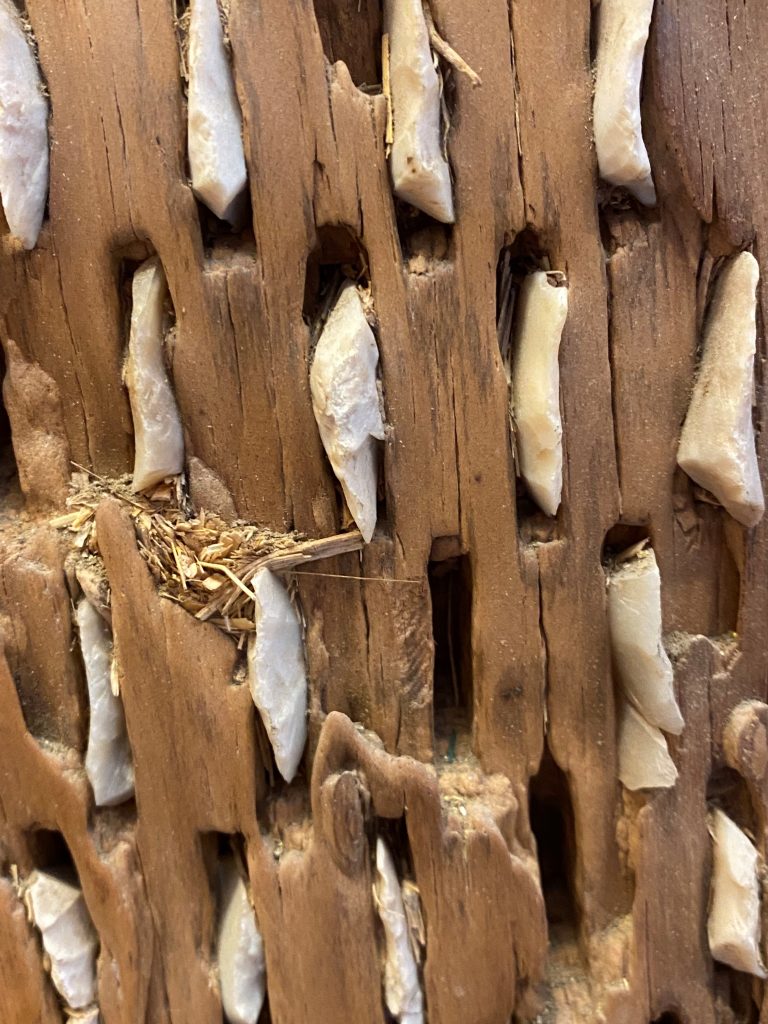
Watch a video of a threshing sledge in use.
